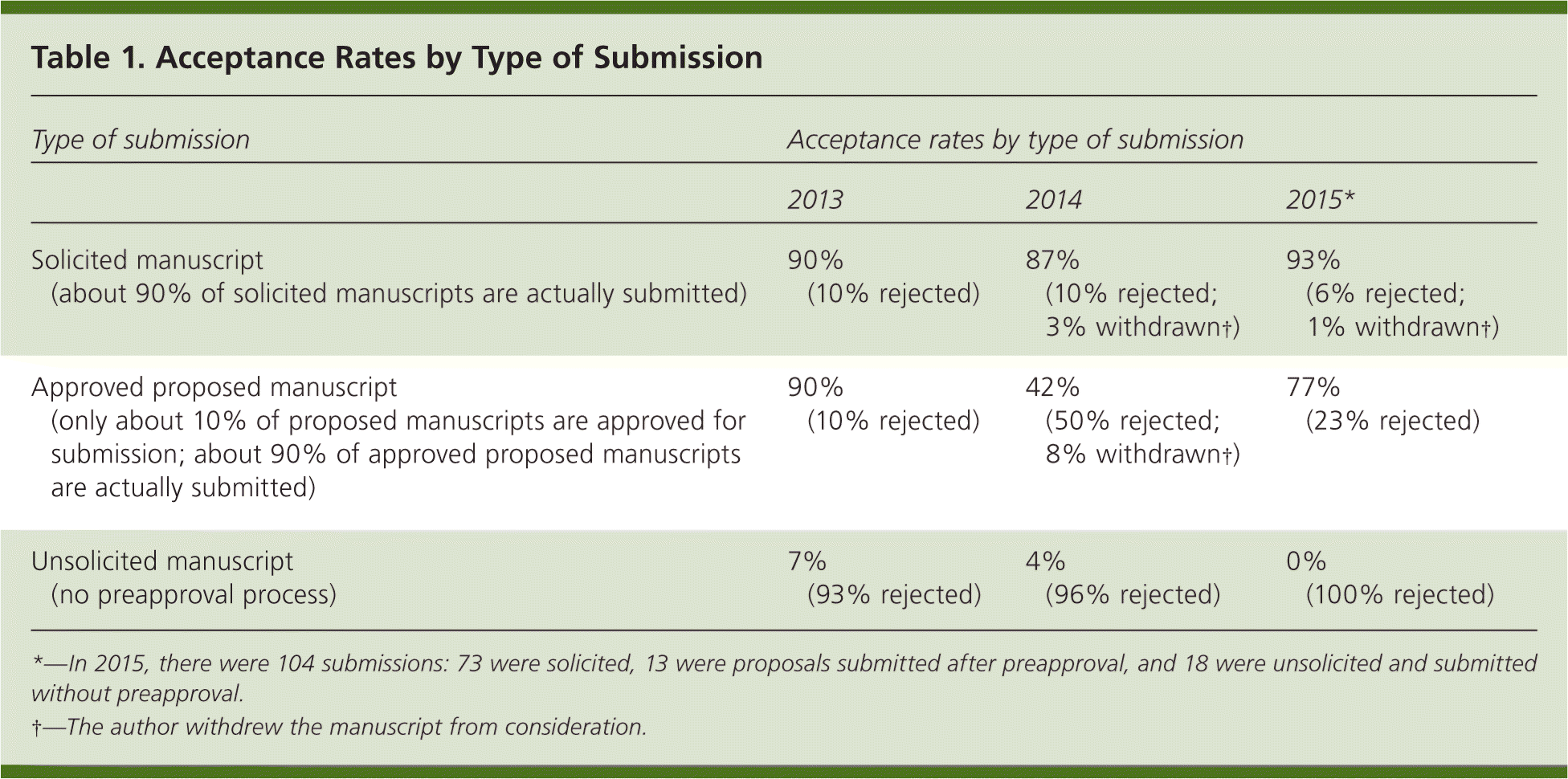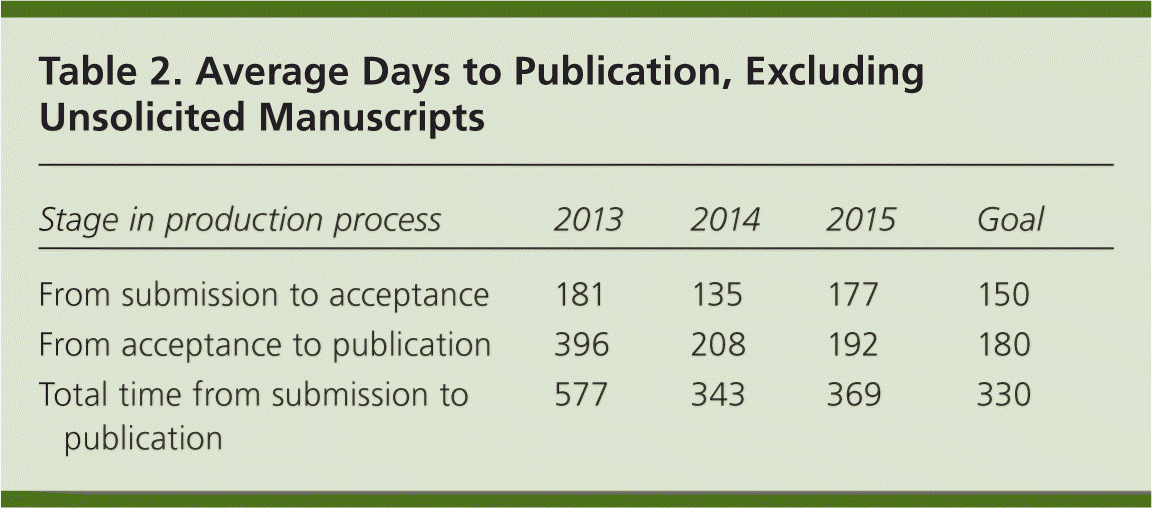
This is an updated version of the editorial that appeared in print.
Am Fam Physician. 2016;94(11):874-876
Author disclosure: No relevant financial affiliations.
In this issue, we begin what will be a regular report documenting the acceptance rates of our clinical review articles and timelines to publication. We are doing this to inform readers and authors of some behind-the-scenes details of how we craft the journal and to set benchmarks for continually improving our processes (Table 1 and Table 2). An extended version of this editorial, including expanded tables, is available in our Authors' Guide (https://www.aafp.org/journals/afp/authors/acceptance-rates.html). Note: These data apply to review articles only; the acceptance rates and timelines to publication differ for our other features (e.g., Curbside Consultation, Point-of-Care Guides, Photo Quiz, etc.). [updated] A few points of context:
Acceptance Rates
To ensure comprehensive coverage of a curriculum of topics, we solicit most of the review articles we publish. Authors who propose topics go through a formal approval process before submitting a manuscript for consideration. Only about 10% of proposed topics are approved. For both solicited and proposed topics, we provide authors with detailed guidance on the focus of the article. This guidance includes links to previously published material in American Family Physician (AFP), a set of links to relevant evidence on the topic, and recommended sources of high-quality evidence.
For all of these reasons, the acceptance rates for solicited manuscripts and approved proposals are high: about 90% for solicited manuscripts and about 75% for proposed manuscripts in 2015.
Manuscripts that are not solicited or preapproved are rarely deemed acceptable. Common reasons are: (1) the topic does not fit AFP's desired curriculum; (2) the topic has recently been covered or is currently in production (hence, our request that prospective authors contact us before starting to write); or (3) the format is not appropriate (e.g., original research reports, case reports on rarely encountered conditions, or nonstandard review articles).
Timelines
Our timelines to publication are longer than most journals because a lot goes into putting our articles together. However, we are working on reducing timelines, which have gotten shorter over the past couple of years, to be as current as possible. In addition, we provide timely information to our readers by publishing selected content online ahead of print, and through platforms such as the AFP Community Blog and AAFP News: AFP Edition, which have shorter timelines to publication.
Among the steps we have taken to shorten these timelines are expediting the peer review process; asking authors to complete their revision in two months rather than four; and cutting the time from acceptance to publication in half: from thirteen months in 2013, to nine months in 2014, to six and a half months in 2015.
All in all, the changes we have implemented have reduced the total time from submission to publication by seven months. We welcome comments from readers and authors about ways to continue to improve our publishing processes.

| Type of submission | Acceptance rates by type of submission | ||
|---|---|---|---|
| 2013 | 2014 | 2015* | |
| Solicited review article manuscript (about 90% of solicited manuscripts are actually submitted) | 90% (10% rejected) | 87% (10% rejected; 3% withdrawn†) | 93% (6% rejected; 1% withdrawn†) |
| Approved proposed manuscript (only about 10% of proposed manuscripts are approved for submission; about 90% of approved proposed manuscripts are actually submitted) | 90% (10% rejected) | 42% (50% rejected; 8% withdrawn†) | 77% (23% rejected) |
| Unsolicited manuscript (no preapproval process) | 7% (93% rejected) | 4% (96% rejected) | 0% (100% rejected) |

| Stage in production process | 2013 | 2014 | 2015 | Goal |
|---|---|---|---|---|
| From submission to acceptance | 181 | 135 | 177 | 150 |
| From acceptance to publication | 396 | 208 | 192 | 180 |
| Total time from submission to publication | 577 | 343 | 369 | 330 |
editor's note: Dr. Siwek is Editor of American Family Physician.
